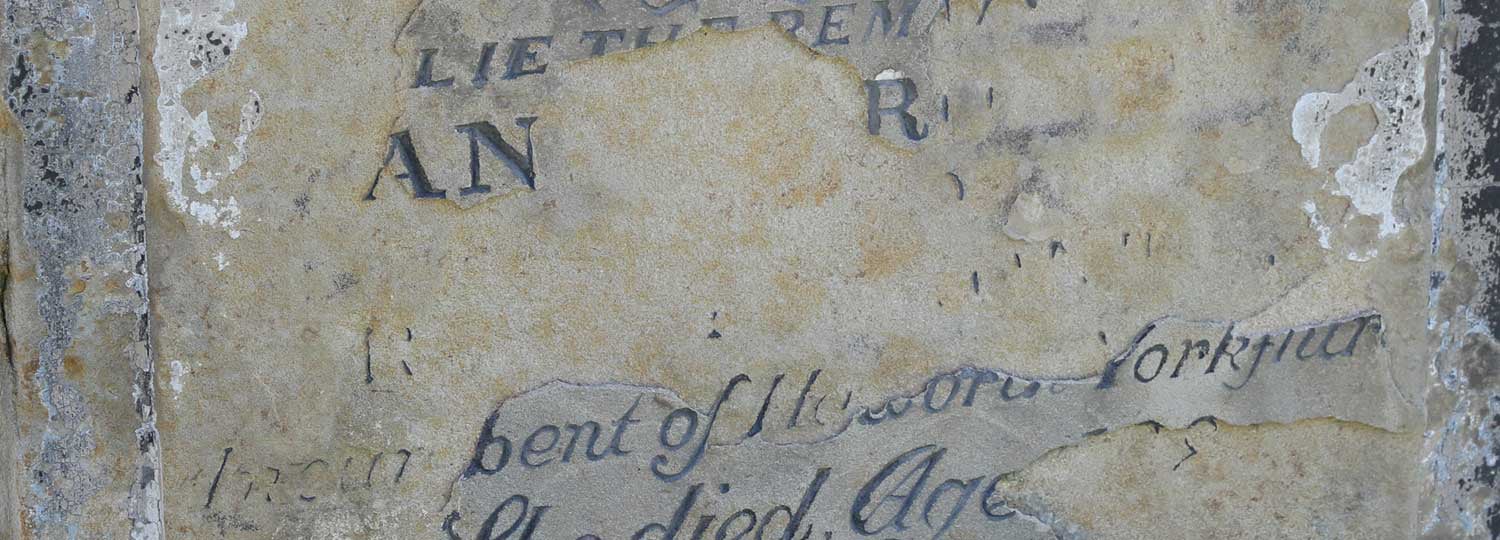

Anne Bronte, the youngest of the Bronte literary family, is known for Agnes Grey's novels (1847), The Tenant of Wildfell Hall (1848), and poetry. Anne loved Scarborough, especially the sea, which she watched from the window of Wood's Lodgings on Long Room Street.
Like her sister Emily before her and many others in the country, Anne contracted tuberculosis, the dreaded scourge of consumption. Anne grew weaker and Knew there was little hope, and against her family’s wishes, she persuaded her friend Ellen Nussey to accompany her to Scarborough, insisting that a change of air would benefit her health.
Anne’s Sister Charlotte had reservations and tried to stop her sister from travelling to Scarborough. However, she eventually respected her sister’s wishes and joined Anne and her friend on what was to be her sister’s final journey.
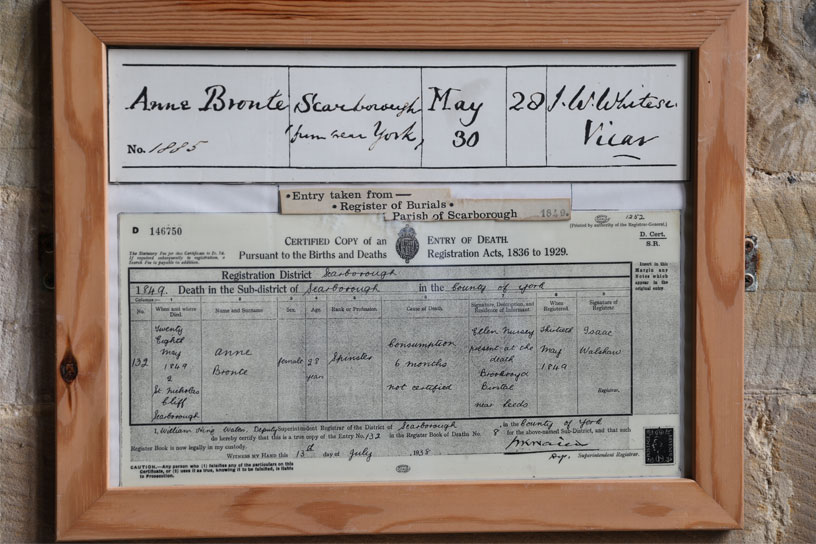
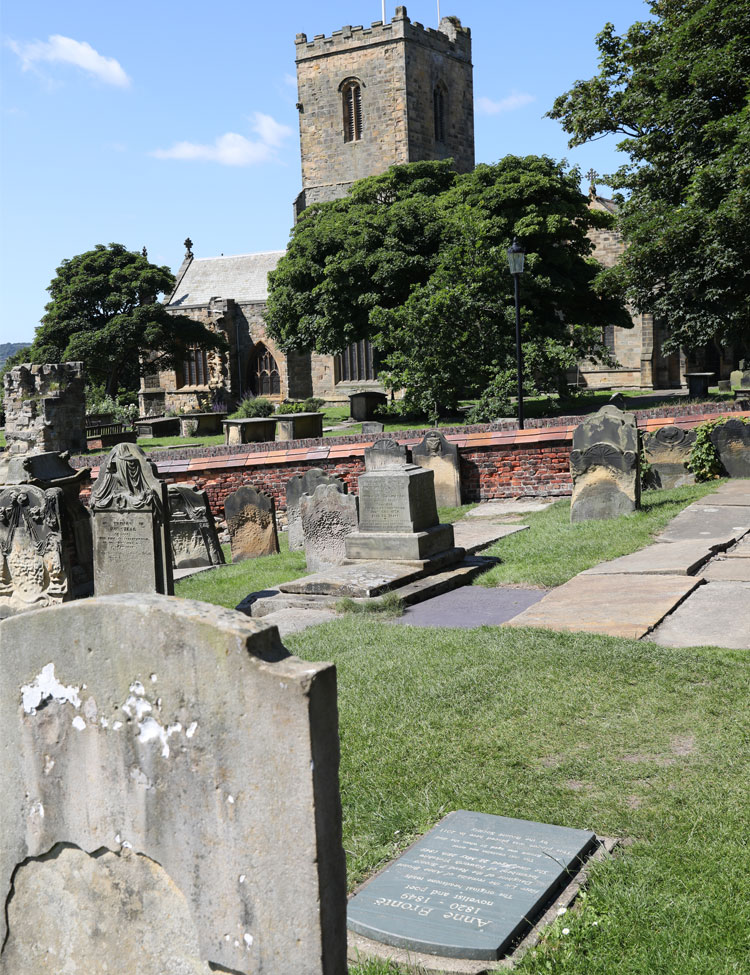
St Mary’s churchyard
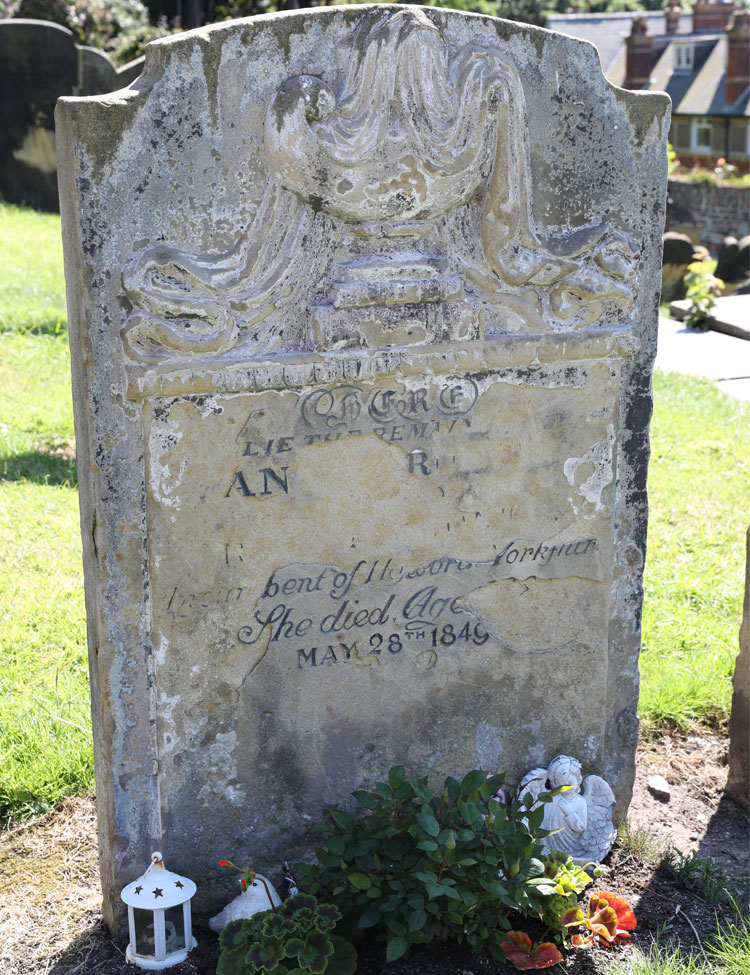
Anne’s Bronte grave
Anne was very weak and when she reached number 2 The Cliff known as ‘Wood’s Lodgings’, Anne’s friends called a doctor. Her diagnosis was not good, and the doctor proclaimed that death was close. Anne took the news gracefully and sought solace in prayer. She died on 28thMay 1849.
Charlotte wanted Anne’s funeral to be at Scarborough’s parish church of St Mary, but renovations were impossible. However, Anne’s final resting place is in St Mary’s churchyard overlooking the sea she loved. Charlotte arranged for a headstone made from Cloughton stone for her sister depicting an urn draped over two books. On the stone was a simple inscription.
‘Here lie the remains l Anne Bronte, daughter of the Rev. R Bronte, Incumbent of Haworth, Yorkshire. She died on 28 May 1849.’ However, when Charlotte returned to visit the grave, she was shocked to see five errors on Anne’s headstone.
One of them gave her age as 28 when she died when in fact, she was 29. Anne’s correct age at death was not corrected until 164 years after her death. One of the other mistakes was the spelling lies instead of lie, and there is no record of what the other three were.
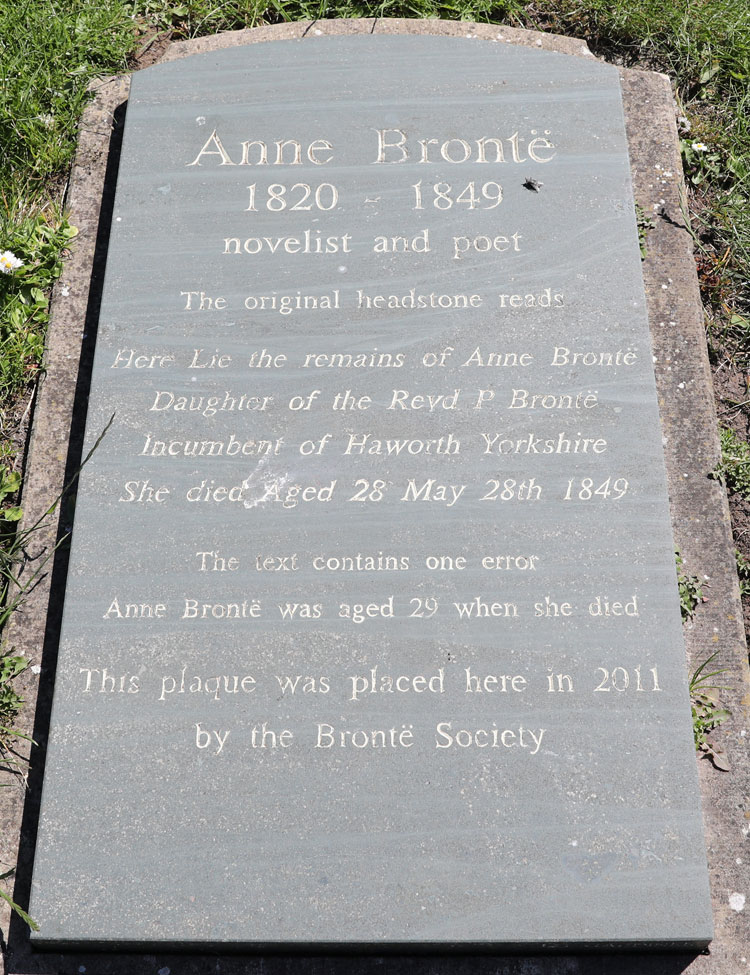
New Plaque, Anne’s Bronte
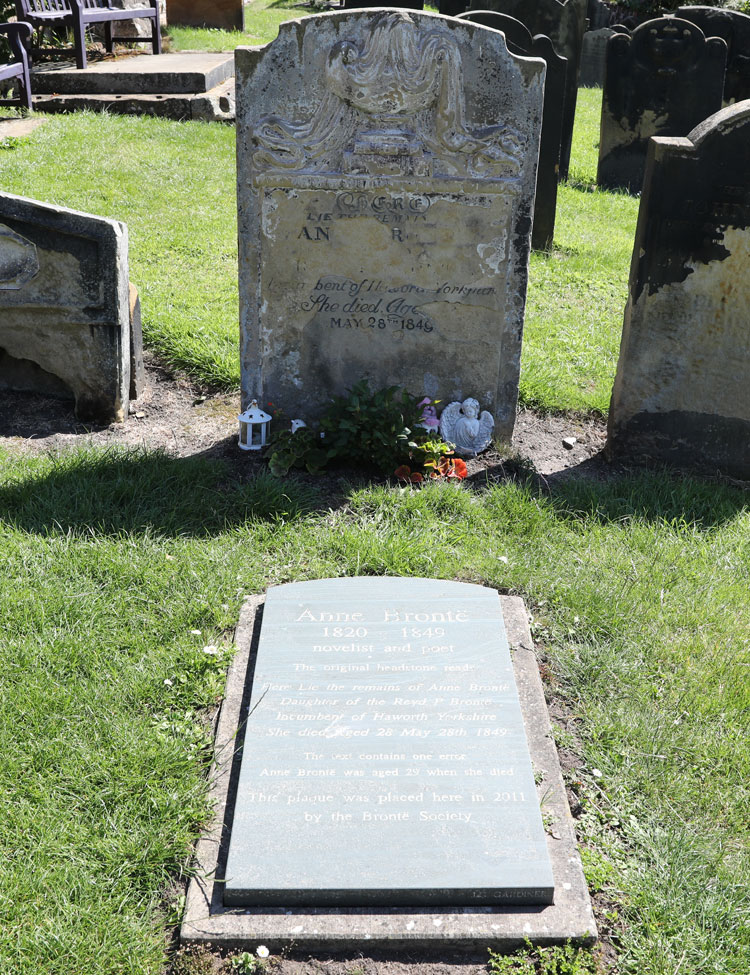
Anne’s Bronte grave
In 1960, the then Vicar of Scarborough suggested that Anne’s grave be exhumed, and her grave moved nearer to the parish church, stressing that it was not unusual to re-intern bodies. Scarborough Corporation refused, instead deciding to spruce the area up, giving Anne a garden surrounding her grave. After the planting came, a ceremony and people flocked from far and wide to witness prayers over the respected author’s grave presided over by the Queen’s Chaplain Canon GWO Addleshaw.
In 2013 to ensure that future visitors would be able to read the inscription on Anne’s grave for years to come, the Bronte Society installed a plaque alongside the original one.
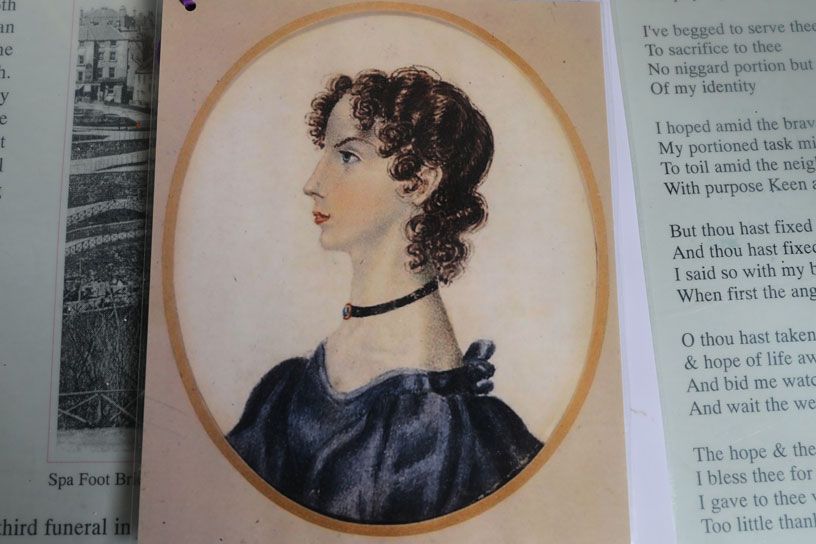
Anne’s Bronte
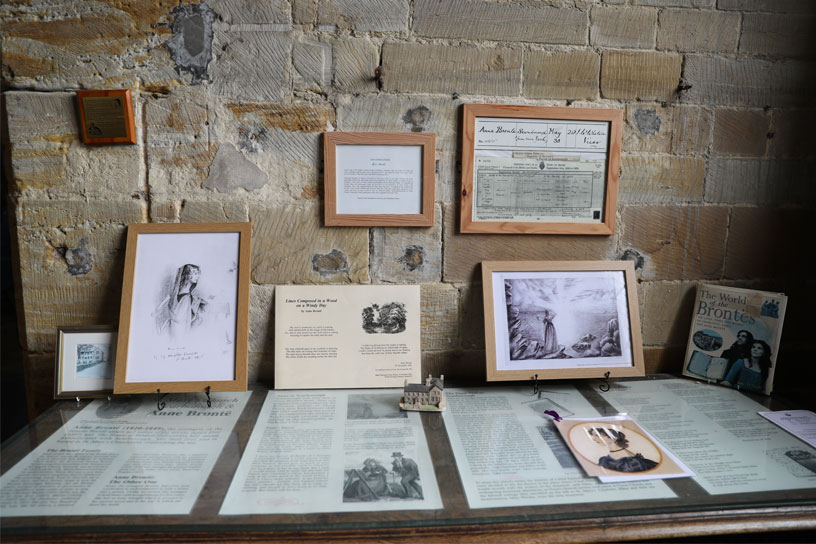
St Mary’s church, Anne’s Bronte
People continue to pay their respects to Anne Bronte, who is remembered as one of the first literary genii who paved the way for female writers worldwide
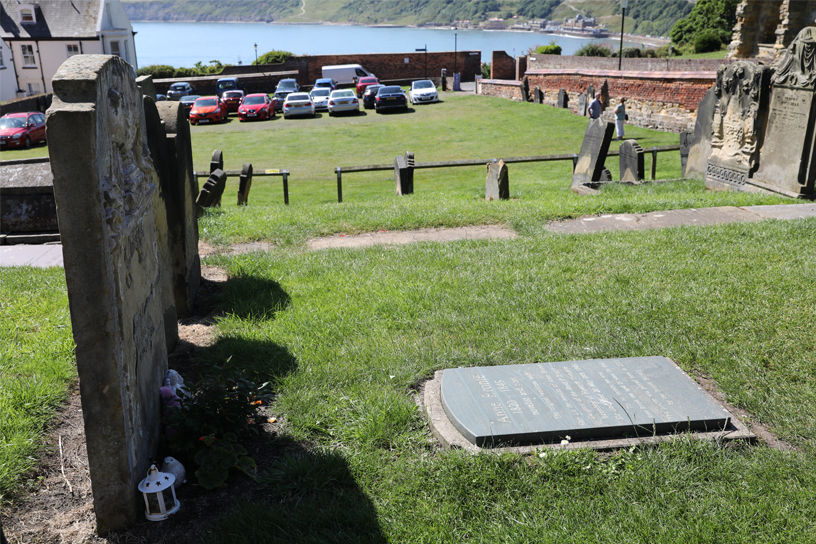
Anne’s Bronte grave overlooking the sea
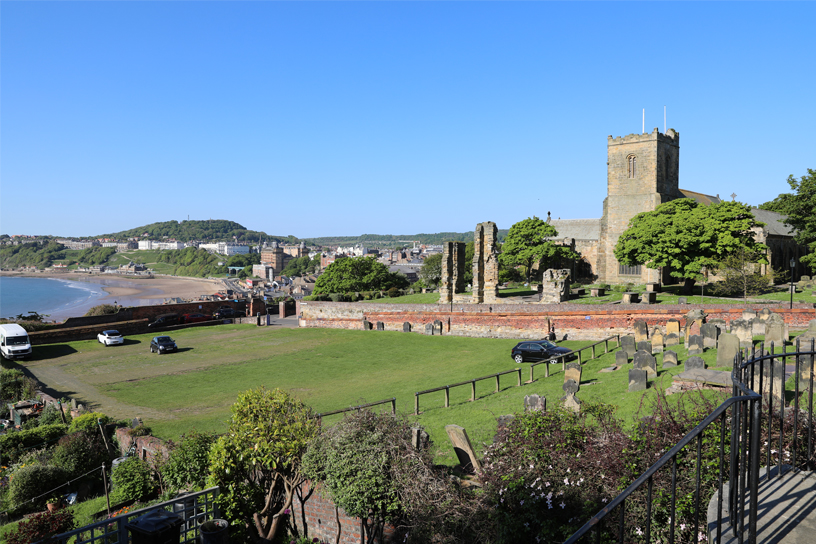
St Mary’s churchyard overlooking the sea